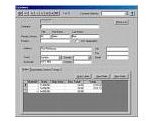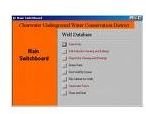MS Access Databases: Using the power of database forms
Forms Are Windows and Doors
An MS Access database form is both our window and door to the database. As a window, the form gives us a complete, partial or restricted look at our information. As a door, the form is a convenient way to maintain (update, change, or delete) the fields and records that make up our tables
Harness the Power of Forms.
When we join related tables, we harness the power of MS Access as a “relational” database. For example, joining a customer table with a products table instantly allows us to see what products each individual customer bought (in the customer table) and which customers bought each individual product (in the products table).
Double the Power with Subforms

Since forms are based on database tables, joining two or more tables will instantly produce a sort of “hybrid” form. In the customer/products example above, using a form “wizard” in MS Access, you could mate an individual customer form with a products subform to display each purchase of that customer. Conversely, you could produce a product form with a customer subform.
Use Forms to Navigate
As your database grows, it not only accumulates more records, but also it acquires more “objects.” Those objects are your new forms, added queries, additional reports, and even new macros – all of which become indispensable to your daily productivity. Soon those objects accumulate in your object list, and database navigation becomes confusing and cumbersome.
That confusion can be overcome with a switchboard or a personalized navigation form with buttons that take you directly to object you need to display or edit. You can either do this through the MS Access switchboard manager (located on the database tools menu) or prepare your own personalized version of the switchboard.
Use the Switchboard Form

The MS Access Switchboard Manager (on the Database Tools menu) composes a switchboard form and is based on the object destinations the user enters. Somewhat “unintuitive,” the switchboard manager can be a bit confusing. If you are planning to create your own switchboard, see Microsoft’s great instruction page on how to make and maintain switchboards.
…Or Make Your Own Switchboard Form!

If you find the switchboard a bit restricting – it allows only eight buttons per page and is rather drab looking – consider making your own switchboard with whatever array of buttons and associated macros you need. You can even “gussy up” your switchboard page with graphics and icon doo-dads. Also, you can create a network of switchboard forms that can serve as sub-pages for complex databases. (Hint: Don’t forget that the last button of each form should take you back to the main form.)
Bottom Line: Forms Are Our Friends!
In addition to using forms for to display and edit data from a single table, we can harness the power of the relational database and maintain multiple forms. We can also use our forms to attach buttons that take us directly the work we want to do and tame the tendency of “object bloat” in MS Access.
This post is part of the series: MS Access Databases
Microsoft Access is a powerful tool for database management. This article series introduces the new user to database structure. Read all about database objects and how to tailor your data use through tables, forms and queries.